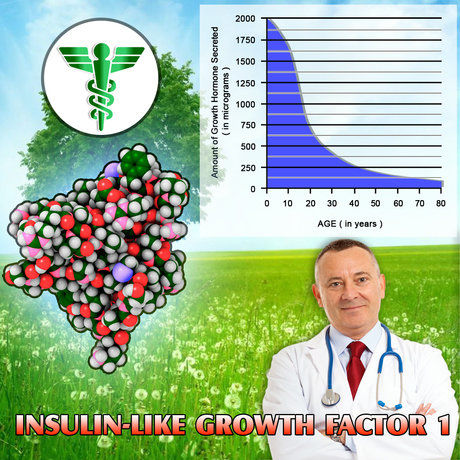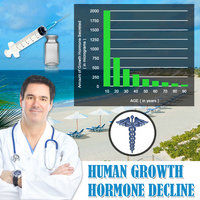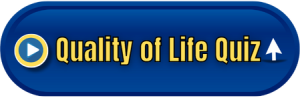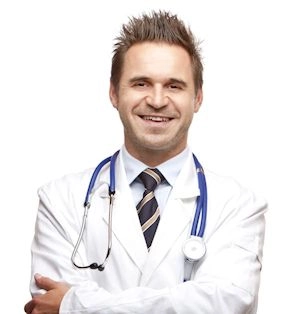Video Link: https://vimeo.com/290590490
Video Download: Understanding Aerobic Vs Anaerobic Exercise
Video Stream: Understanding Aerobic Vs Anaerobic Exercise
The human body depends on two forms of energy production to facilitate physical activity — Aerobic and Anaerobic. While these concepts are easy to understand, most people haven't been adequately informed about how and why each form of fitness is essential.
In Aerobic Exercise, muscle activity is fostered by the combination of the calories that we take in and the oxygen that we breathe.
When you increase your activity level, your breathing rate increases because your body needs more oxygen to break down stored energy.
The lungs work harder, which fuels the heart, which distributes oxygen to the muscles.
Humans Fine-Tuned for Maintaining an Elevated Activity Level
Humans are specialists at utilizing aerobic energy for long-duration activity. That's believed to be one of the evolutionary advantages that got us where we are today.
While humans were rarely stronger and/or quicker than their prey, they had the advantage  of being able to hunt the prey for long periods, exhausting the animal.
of being able to hunt the prey for long periods, exhausting the animal.
Of course, aerobic energy isn't perfect for everything, which is also why we can generate power when the body needs more energy than oxygen can provide.
This is known as anaerobic muscle activity. Anaerobic energy generation is required for bursts of strength or speed. The body can only sustain anaerobic exercise for so long before it must relent to fatigue, however.
What Happens When We Depend Too Heavily Upon Anaerobic Energy Output?
If the heart and lungs can't match the body's energy requirements, this leads to lactic acid build-up. This leads directly to an increase in pH levels in the blood.
The human body has strict pH requirements for normal function, so the body can only withstand anaerobic activity for a short time before having to shut that system down temporarily for recovery.
There are two factors that contribute to an individual's ability to withstand vigorous activity without succumbing to fatigue.
The oxygen has to get to the muscles, and the muscles have to be able to utilize that oxygen in Adenosine Triphosphate (ATP) production.
All human activity is the result of chemical reactions that contribute to a continuous  function. In fact, the body is always producing a constant stream of energy 24 hours per day.
function. In fact, the body is always producing a constant stream of energy 24 hours per day.
There are three ingredients that are essential to providing energy — fat, carbohydrates, and oxygen.
As long as these ingredients are available, the body can produce the power to meet its ongoing needs.
Of course, protein is also essential but is not essential to the creation of energy. In fact, if the body takes in more protein than it requires, then it is merely converted into a carbohydrate or fat molecule.
Why Does the Body Need an Anaerobic System for Energy Production?
As you can tell from our description, Aerobic energy production is excellent for producing a constant stream of energy.
The problem is that producing energy from oxygen takes time. It may not seem like a long time, but when the body needs a burst of energy, aerobic conversion simply won't cut it. That's why the body has an anaerobic backup system.
When activity levels and energy requirements increase abruptly, anaerobic energy production increases to help the body adjust to these changes.
Anaerobic activity either slows down as aerobic capacity catches up to energy needs, or the body has to revert to a lower level of activity.
How Does Exercise Utilize Anaerobic and Aerobic Energy Output During Mild to Moderate Activity?
As exercise begins, the body expends immediately available reserves of energy
without the need for oxygen.
During this phase, glucose and glycogen are the anaerobic sources of available energy.  The liver can quickly deliver glucose to the muscles, and glycogen is readily available in muscle tissue.
The liver can quickly deliver glucose to the muscles, and glycogen is readily available in muscle tissue.
The problem is that these reactions produce Lactic Acid. While the liver is capable of taking Lactic Acid and reverting it to Glycogen, this process takes time.
As the body grows accustomed to the requirements of the activity at hand, oxygen production rises to meet the demands of muscle, which is achieved by a concurrent decrease in anaerobic exercise.
In the case of light exercise, aerobic activity can meet 100% of the body's energy demands.
As the body gets used to ongoing activity, the liver begins taking stored glycogen from Lactic Acid and converting it into glucose.
This helps the body sustain anaerobic capacity during aerobic activity. While anaerobic exercise prefers sugar and carbs, the aerobic system prefers fat for energy production.
As exercise continues, fat cells (adipocytes) secrete fat to facilitate the continued production of energy from oxygen.
How Does the Body Produce Energy for High-Intensity Activity?
If exercise continues to increase in intensity, the body has the means to amplify energy production further. Unfortunately, Aerobic capacity is gated by the body's ability to extract carbon dioxide through respiration.
As the body's ability to produce oxygen and release carbon dioxide increases toward its maximum output, the body increases its reliance on anaerobic energy production.
Activity that puts intense strain on muscle tissue leads to the compression of the tiny arteries which feed the muscles oxygen, which leaves the muscle itself to produce its own  energy for lifting heavy weights, sprinting, etc.
energy for lifting heavy weights, sprinting, etc.
This can only go on for so long because it leads to Lactic Acid build-up.
This impairs the ability of the body to meet its aerobic energy demands, which triggers exhaustion and fatigue to give the body time to recuperate.
The liver only converts a portion of lactic acid into glycogen, which means that there are diminishing returns for anaerobic activity, which eventually means that activity must eventually slow down or cease to allow the muscles to rebuild their anaerobic energy stores.
Reference
What Is the Difference Between Aerobic & Anaerobic Exercise?
Contact Us For A Fast And Professional Response

- The Other Aspect of Dieting – Removing Chronic Stressors From Your Life [Last Updated On: February 9th, 2025] [Originally Added On: September 9th, 2020]
- The Flaws of Six Popular Diets [Last Updated On: June 6th, 2025] [Originally Added On: September 20th, 2020]
- Purchase Sermorelin Acetate Injections Online [Last Updated On: February 8th, 2025] [Originally Added On: September 23rd, 2020]
- Eating Right On a Low-Glycemic Diet [Last Updated On: April 20th, 2025] [Originally Added On: October 1st, 2020]
- The Benefits of Intermittent Fasting [Last Updated On: May 16th, 2025] [Originally Added On: October 2nd, 2020]
- Eat Healthier with White Flour Alternatives [Last Updated On: August 26th, 2025] [Originally Added On: October 3rd, 2020]
- Ten Common Contributors to Obesity that Make it Hard to Lose Weight [Last Updated On: March 5th, 2025] [Originally Added On: October 4th, 2020]
- How Can Sermorelin Enhance Your Life? Losing Weight and Battling Premature Aging With Sermorelin [Last Updated On: April 1st, 2025] [Originally Added On: October 5th, 2020]
- Benefits and Risks of HGH Therapy: 2018 Update [Last Updated On: April 15th, 2025] [Originally Added On: October 6th, 2020]
- Have You Heard About the 21st Century Breakthroughs in Hormone Replacement Therapy? [Last Updated On: September 16th, 2025] [Originally Added On: October 7th, 2020]
- The Importance of Omega-3 Fatty Acids [Last Updated On: June 4th, 2025] [Originally Added On: October 8th, 2020]
- The Relationship Among Testosterone, Obesity, and Alzheimer's Disease [Last Updated On: August 25th, 2025] [Originally Added On: October 9th, 2020]
- Major Alzheimer's Risk To Continued Sleep Deprivation [Last Updated On: April 29th, 2025] [Originally Added On: October 10th, 2020]
- Should You Choose the Ketogenic Diet? [Last Updated On: May 7th, 2025] [Originally Added On: October 13th, 2020]
- HGH and Insulin: The Primary Agents of Energy Bio-Availability [Last Updated On: March 24th, 2025] [Originally Added On: October 14th, 2020]
- How Can Women Maximize HGH Production? [Last Updated On: April 5th, 2025] [Originally Added On: October 18th, 2020]
- Micro Nutrients Versus Macro Nutrients [Last Updated On: January 11th, 2025] [Originally Added On: November 4th, 2020]
- Some of the most effective Weight Loss Injection and Diet Injection Programs [Last Updated On: June 10th, 2025] [Originally Added On: November 6th, 2020]
- Information About Chelation Therapy [Last Updated On: April 9th, 2025] [Originally Added On: November 9th, 2020]
- Seven Ways to Help You Burn Calories Faster and More Effectively [Last Updated On: March 28th, 2025] [Originally Added On: January 21st, 2021]
- Don’t Eat These Foods When Taking Sermorelin Acetate for HGH Deficiency [Last Updated On: February 14th, 2025] [Originally Added On: February 3rd, 2021]
- Physician’s Fact Sheet: Vitamin E [Last Updated On: January 10th, 2025] [Originally Added On: March 8th, 2021]
- Naturally Losing Weight with Lifestyle Changes Keeps the Weight Off for Good [Last Updated On: May 4th, 2025] [Originally Added On: March 27th, 2021]
- The Health Benefits of the Amazing Strawberry [Last Updated On: February 9th, 2025] [Originally Added On: May 8th, 2021]
- Need Better Sleep? Try Eating Pistachios Before Bed! [Last Updated On: January 21st, 2025] [Originally Added On: February 16th, 2022]
- Three Kinds of Body Fat and How They Impact Your Health [Last Updated On: August 12th, 2025] [Originally Added On: April 12th, 2022]
- Pistachios: You’re Not Nuts [Last Updated On: January 4th, 2025] [Originally Added On: August 3rd, 2022]
- 7 Surprising Things That Mess With Your Hormones [Last Updated On: February 26th, 2025] [Originally Added On: September 5th, 2022]
- Adding Cranberries to Your Diet can Really Add Zest – and Health – to Your Life. [Last Updated On: September 27th, 2025] [Originally Added On: January 10th, 2023]
- Raspberries – Delicious Portal to Shining Good Health [Last Updated On: October 1st, 2025] [Originally Added On: January 18th, 2023]
- Study Shows Cialis and Viagra Users have 25% Lower Early Death Rates [Last Updated On: March 14th, 2025] [Originally Added On: February 19th, 2023]
- Introduction: Understanding the Multifaceted Nature of Obesity [Last Updated On: March 2nd, 2025] [Originally Added On: March 2nd, 2025]
















